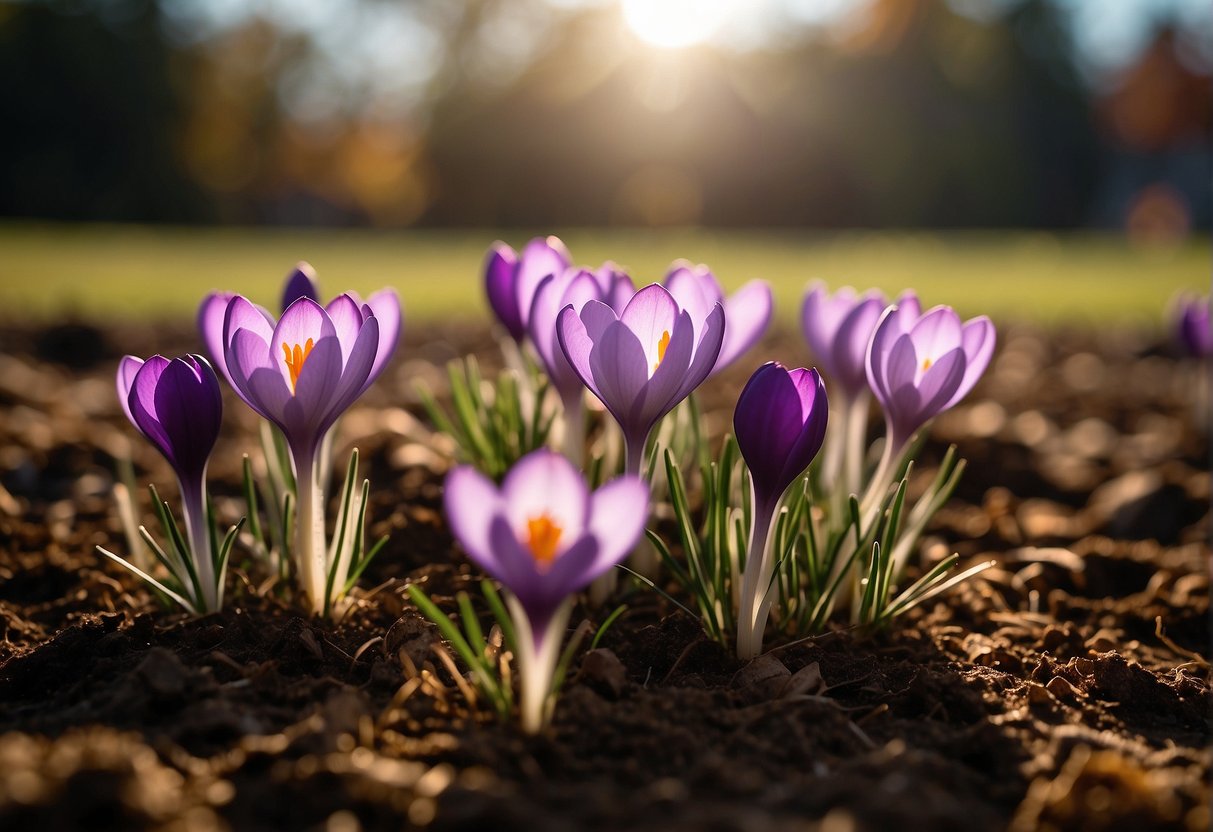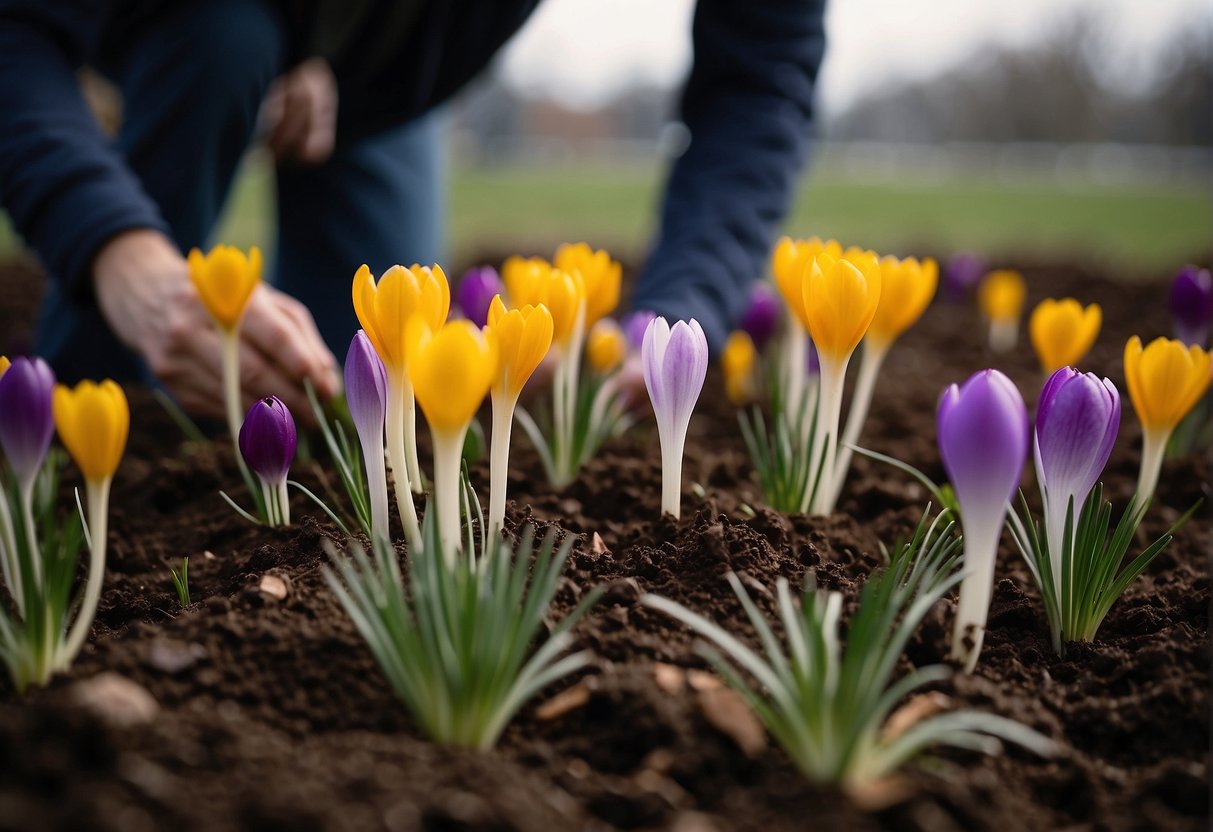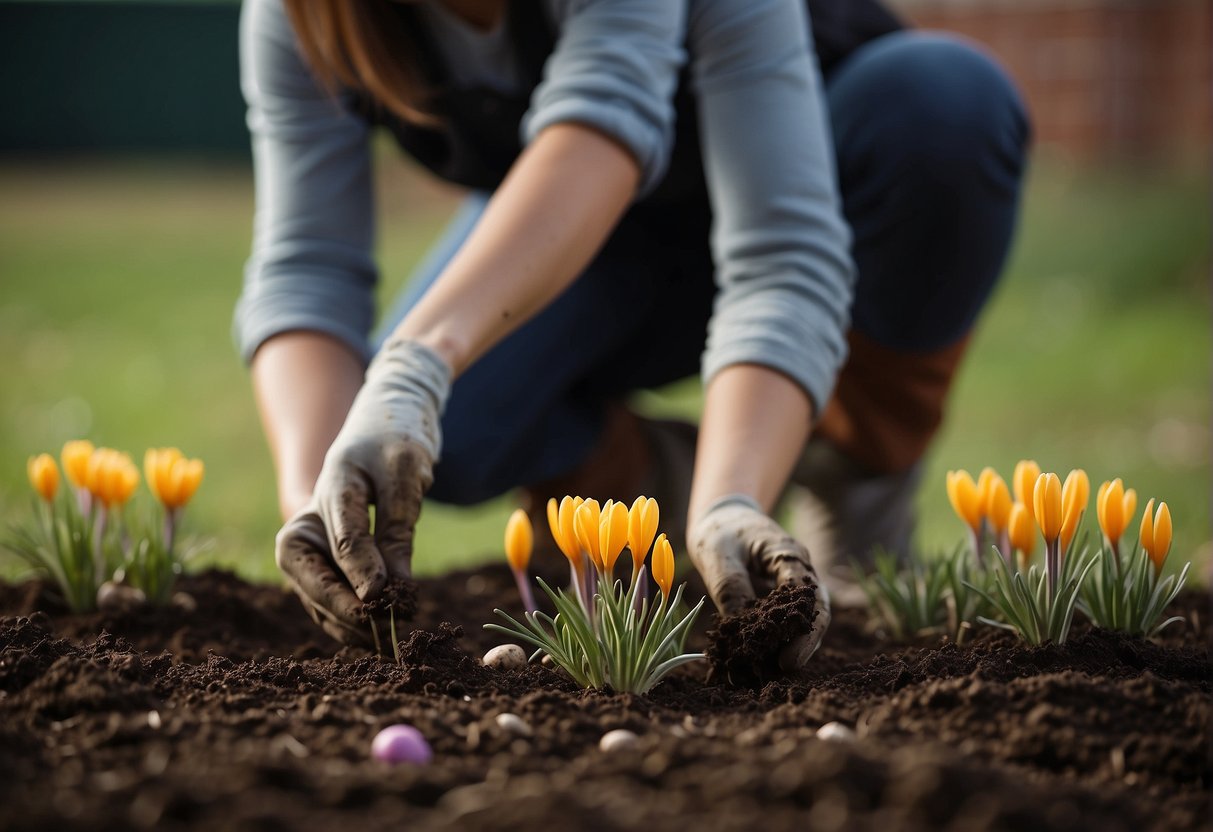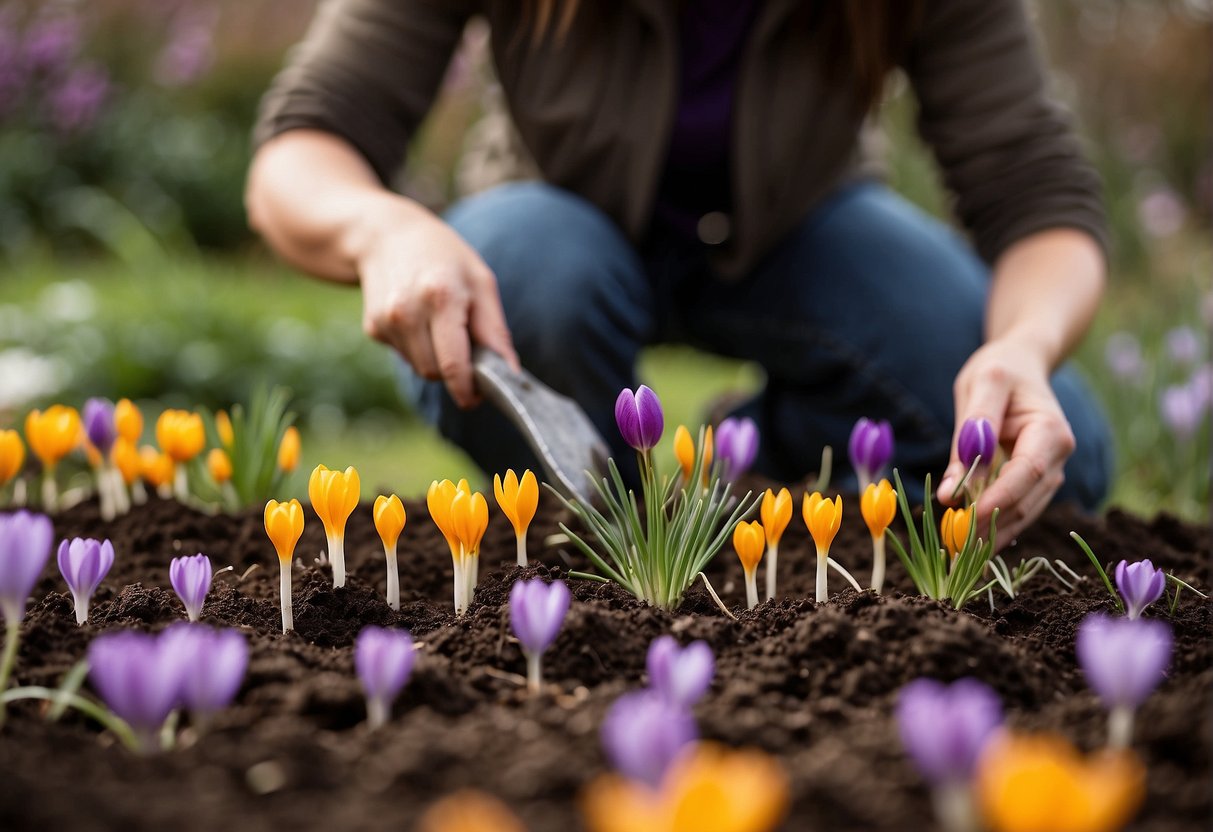When to Plant Crocus Bulbs: A Guide for Gardeners
Crocus bulbs are a popular choice for gardeners looking to add some early spring color to their landscapes. Known for their delicate, cup-shaped flowers in shades of purple, yellow, and white, crocuses are a symbol of joy and renewal after a long winter. But when is the best time to plant crocus bulbs?

Generally, the best time to plant crocus bulbs is in the fall, before the ground freezes. This gives the bulbs enough time to establish roots before going dormant for the winter. In most areas, this means planting in September or October. However, the exact timing will depend on your climate and the specific variety of crocus you are planting.
It’s important to plant crocus bulbs at the right depth to ensure they grow properly. In general, bulbs should be planted at a depth that is three times their height. For crocuses, this means planting them about 3-4 inches deep. Be sure to plant the bulbs with the pointed end facing up, and water them thoroughly after planting. With proper care, your crocus bulbs should bloom in early spring, bringing a burst of color and joy to your garden.
Understanding Crocus Bulbs

Crocus bulbs are a popular choice for gardeners who want to add some color to their gardens in the early spring. These bulbs are easy to grow and come in a variety of colors, making them a great addition to any garden.
Crocus Varieties
There are many different varieties of crocus bulbs available, each with their own unique characteristics. Some of the most popular varieties include the Dutch crocus, snow crocus, and saffron crocus.
The Dutch crocus is a perennial variety that produces large, showy blooms in a range of colors, including purple, yellow, and white. The snow crocus, on the other hand, is a smaller variety that produces delicate white or pale purple flowers. The saffron crocus is known for its bright orange stigmas, which are used to make the popular spice saffron.
Crocus Bulb Anatomy
Crocus bulbs are actually corms, which are modified stems that store nutrients for the plant. These corms are covered in a protective layer of papery scales, which help to keep them moist and protected from the elements.
When planting crocus bulbs, it’s important to choose a location that receives plenty of sunlight and has well-draining soil. The bulbs should be planted in the fall, before the ground freezes, and should be covered with a layer of mulch to help protect them from the cold.
Overall, crocus bulbs are a great choice for gardeners who want to add some early spring color to their gardens. With their wide range of colors and easy-to-grow nature, these bulbs are sure to be a hit with any gardener.
Optimal Planting Times

Seasonal Guide for Planting
Crocus bulbs can be planted in both fall and spring, but the optimal time to plant them is in the fall. Planting in the fall allows the bulbs to establish their root system before the winter sets in, which leads to better growth and earlier blooming in the spring.
In USDA hardiness zones 4, 5, 6, and 7, crocus bulbs should be planted in September or early October, before the first hard frost. In zones 8 and above, crocus bulbs can be planted in late fall or early winter.
Chilling Requirements
Crocus bulbs require a chilling period in order to bloom, which means they need to be exposed to cold temperatures for a certain amount of time. This chilling period can be achieved by planting the bulbs in the fall, or by storing them in a refrigerator for 6-8 weeks before planting in the spring.
It’s important to make sure the bulbs are stored in a dry location during their chilling period, as excess moisture can cause them to rot.
In conclusion, planting crocus bulbs in the fall is the optimal time for best results. By following the seasonal guide for planting and ensuring the bulbs receive the necessary chilling period, gardeners can enjoy beautiful crocus blooms in the spring.
Site Selection and Soil Preparation
Choosing the Right Location
When selecting a site for planting crocus bulbs, it is important to choose a location that receives ample sunlight. Crocus bulbs require full sun to partial shade to grow and thrive. It is also important to choose a location with well-draining soil to prevent waterlogging and root rot.
Soil Conditions and Amendments
Crocus bulbs prefer well-draining soil that is rich in organic matter. Before planting, it is recommended to prepare the soil by removing any weeds or debris and loosening the soil to a depth of at least 6 inches. Incorporating compost or other organic matter into the soil can help improve soil structure and fertility.
It is important to avoid planting crocus bulbs in areas with poor drainage, as this can lead to root rot and other diseases. If the soil in the planting area is heavy or clay-like, adding sand or perlite can help improve drainage.
Overall, selecting the right location and preparing the soil properly can greatly increase the chances of successful crocus bulb growth and blooming.
Planting Crocus Bulbs
Crocus bulbs are a great addition to any garden or flower bed, providing a burst of color in the early spring. Knowing when and how to plant crocus bulbs is key to ensuring a successful and beautiful display.
How to Plant Crocus Bulbs
When planting crocus bulbs, it is important to choose a location that receives full sun or partial shade. The soil should be well-draining and free of any rocks or debris. If planting in a pot, make sure it has drainage holes to prevent water from accumulating.
To plant crocus bulbs, dig a hole about 3-4 inches deep and place the bulb pointy side up. Cover the bulb with soil and gently press down to remove any air pockets. Space the bulbs about 3-4 inches apart.
Depth and Spacing
The depth and spacing of crocus bulbs is important for proper growth and development. Planting too shallow can lead to bulbs drying out, while planting too deep can prevent them from sprouting. A general rule of thumb is to plant bulbs at a depth of 3-4 inches, or about three times the height of the bulb.
Spacing is also important to ensure proper growth and prevent overcrowding. Crocus bulbs should be spaced about 3-4 inches apart, which allows for enough room for the bulbs to grow and spread.
Mulching around the bulbs can help retain moisture and regulate soil temperature, which can improve their chances of survival. However, be careful not to mulch too close to the bulbs, as this can cause them to rot.
By following these simple steps, anyone can successfully plant crocus bulbs in their garden or flower bed and enjoy their beautiful blooms in the early spring.
Crocus Care and Maintenance

Crocus bulbs are easy to plant and maintain, making them a popular choice for gardeners. Proper care and maintenance can help ensure that your crocuses bloom beautifully year after year.
Watering and Fertilizing
Crocus bulbs require regular watering, especially during the growing season. However, it is important to avoid over-watering as this can lead to bulb rot. A good rule of thumb is to water the bulbs when the top inch of soil feels dry to the touch.
Fertilizing can also help ensure healthy growth and blooming. A balanced fertilizer with equal amounts of nitrogen, phosphorus, and potassium can be applied in early spring before the bulbs start to grow. However, be sure to follow the manufacturer’s instructions and avoid over-fertilizing.
Protecting from Pests and Diseases
Crocuses can be vulnerable to pests such as squirrels, deer, and rabbits, which may dig up and eat the bulbs. To protect the bulbs, gardeners can cover the planting area with wire mesh or use repellents that contain ingredients such as garlic or hot pepper.
Diseases such as bulb rot can also be a problem for crocuses. To prevent rot, it is important to plant the bulbs in well-draining soil and avoid over-watering. If you notice any signs of rot, such as soft or mushy bulbs, remove them immediately to prevent the spread of the disease.
By following these simple care and maintenance tips, gardeners can enjoy beautiful and healthy crocuses year after year.
Frequently Asked Questions

What is the ideal time of year to plant crocus bulbs in colder climates?
Crocus bulbs should be planted in the fall, ideally 6-8 weeks before the first frost. This allows the bulbs to establish roots before winter and ensures they bloom in the spring. In colder climates, it is recommended to plant crocus bulbs in September or October.
How should crocus bulbs be planted in containers?
When planting crocus bulbs in containers, it is important to use well-draining soil and ensure the container has drainage holes. The bulbs should be planted at a depth of 3-4 inches and spaced 2-3 inches apart. After planting, water the container thoroughly and place it in a cool, dark location until the bulbs begin to sprout.
Is it possible to plant crocus bulbs during the spring season?
While it is possible to plant crocus bulbs in the spring, it is not recommended as the bulbs may not have enough time to establish roots before the warmer weather arrives. It is best to plant crocus bulbs in the fall for optimal growth and blooming in the spring.
What is the recommended depth for planting crocus bulbs in the garden?
Crocus bulbs should be planted at a depth of 3-4 inches in the garden. It is important to ensure the soil is well-draining to prevent the bulbs from rotting. If planting multiple bulbs, space them 2-3 inches apart.
Can you expect crocus bulbs to naturalize and return annually?
Yes, crocus bulbs are known to naturalize and return annually in the garden. However, it is important to ensure the soil is well-draining and the bulbs are planted at the appropriate depth to promote healthy growth and blooming.
Where in the garden will crocus bulbs thrive best?
Crocus bulbs thrive in areas with full to partial sun and well-draining soil. They can be planted in garden beds, borders, or even in containers. Additionally, crocus bulbs are often used in rock gardens and as a naturalizing plant in lawns.

